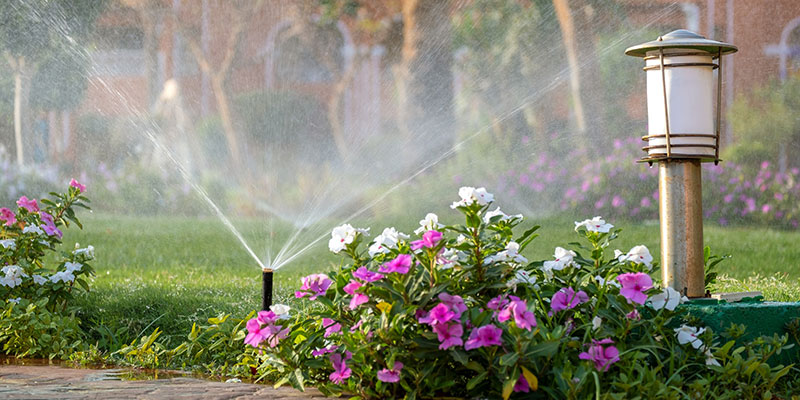When recycled water is used for applications like landscape irrigation, it takes pressure off of other diminishing sources of fresh water.
Water reuse offers a sustainable solution for building climate resilience and water security, while maintaining the environmental integrity of freshwater systems
As water scarcity becomes more and more of a reality both in the United States and across the world, decision-makers are turning to alternative sources of water to supplement conventional water supplies. Wastewater that has been treated and recycled for reuse is one nonconventional source of water that can improve water availability and build resilience to droughts. But this does require an investment in specialized wastewater treatment infrastructure.
The U.S. Bipartisan Infrastructure Bill, which was signed into law in November 2021, has allocated funding for investment in key infrastructure projects across the nation. The law aims to rebuild transportation networks, provide high-speed internet to everyone, improve access to safe drinking water, and tackle environmental pollution, while also implementing measures to mitigate climate change.
The provision of clean, safe drinking water is a top priority, with generous allocations aimed at upgrading aging water and wastewater infrastructure across the country, replacing lead water pipes with safer alternatives, and tackling persistent environmental pollutants such as PFAS in freshwater systems.
Improving Water Security
In November 2022, the U.S. Department of the Interior (DOI) announced $1.4 billion in Bipartisan Infrastructure Law funding for 129 water infrastructure projects to build drought-resilience in the Western U.S. The budget includes money to improve rural water supply systems, increase dam safety, repair aging water infrastructure, and develop water recycling and reuse projects.
Treating wastewater for reuse can address many of the water challenges we currently face. It can also help alleviate potential future water crises given the increasing pressure on limited water resources, which is exacerbated by a growing population and climate change. With funding available for water infrastructure and water reuse projects, now is a good time to consider new projects.
Treating wastewater for reuse not only addresses water scarcity challenges, but it also prevents pollution of waterways by alleviating the need for discharging effluent into the environment. Wastewater effluent that undergoes treatment can be safely reused for nonpotable uses, including:
- Irrigation of crops and landscaping
- Toilet-flushing
- Cleaning streets
- Industrial applications such as boiler feed water, cooling towers, and process water
It can also be used to recharge aquifers or to preserve freshwater systems. When treated further, it can even be used as a source of drinking water.
Fluence offers options for water reuse, including cost-effective, decentralized solutions for treating and reusing water on-site. For example, compact Aspiral™ modular wastewater treatment plants use very little energy, have a small footprint, and do not require a large investment in extensive infrastructure, yet can have a big impact when it comes to protecting the environment against pollution or overextraction.
Besides alleviating the environmental impact associated with wastewater discharge, Fluence’s energy-efficient water reuse solutions substantially reduce the costs associated with wastewater treatment and disposal.
Having a viable water reuse solution in place can improve water security and long-term sustainability for communities and industries. Contact Fluence to find out how our innovative water reuse solutions can improve water security for your business and the surrounding communities.

